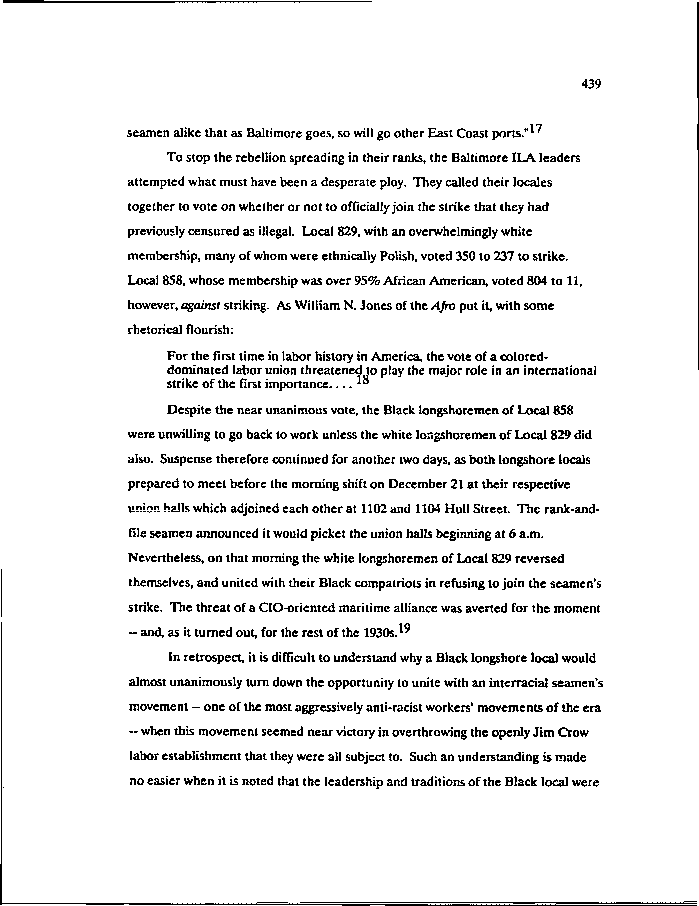|
439
seamen alike that as Baltimore goes, so will go other East Coast ports." ^
To stop the rebellion spreading in their ranks, the Baltimore ILA leaders
attempted what must have been a desperate ploy. They called their locales
together to vote on whether or not to officially join the strike that they had
previously censured as illegal. Local 829, with an overwhelmingly white
membership, many of whom were ethnically Polish, voted 350 to 237 to strike.
Local 858, whose membership was over 95% African American, voted 804 to 11,
however, against striking. As William N. Jones of the Afro put it, with some
rhetorical flourish:
For the first time in labor history in America, the vote of a colored-
dominated labor union threatened to play the major role in an international
strike of the first importance.... *°
Despite the near unanimous vote, the Black longshoremen of Local 858
were unwilling to go back to work unless the white longshoremen of Local 829 did
also. Suspense therefore continued for another two days, as both longshore locals
prepared to meet before the morning shift on December 21 at their respective
union halls which adjoined each other at 1102 and 1104 Hull Street. The rank-and-
file seamen announced it would picket the union halls beginning at 6 a.m.
Nevertheless, on that morning the white longshoremen of Local 829 reversed
themselves, and united with their Black compatriots in refusing to join the seamen's
strike. The threat of a ClO-oriented maritime alliance was averted for the moment
- and, as it turned out, for the rest of the 1930s.19
In retrospect, it is difficult to understand why a Black longshore local would
almost unanimously turn down the opportunity to unite with an interracial seamen's
movement - one of the most aggressively anti-racist workers' movements of the era
— when this movement seemed near victory in overthrowing the openly Jim Crow
labor establishment that they were all subject to. Such an understanding is made
no easier when it is noted that the leadership and traditions of the Black local were
|

